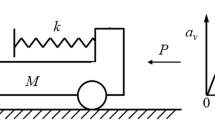Abstract
There have not been many studies on the factors that affect chest deflection, although the US NCAP thoracic injury criterion was recently shifted from the 3-msec clip to chest deflection. This study explored these factors and proposed a design methodology for the factors to minimize chest deflection. Because injuries can become severe if the driver crashes against the vehicle interior, this study also sought a solution using a penalty function to prevent crashes with the interior and minimize injuries. First, a MADYMO model was made to simulate US NCAP and EURO NCAP tests by one-to-one and stochastic verifications. Second, a sensitivity analysis was conducted to find the major factors that affect chest deflection. Lastly, the factors identified via the sensitivity analysis were optimized to propose design guidelines that helped vehicles receive high star ratings in US NCAP and EURO NCAP tests and helped minimize the possibility of hard contact between the driver and the vehicle interior by utilizing a penalty function and the Taguchi method.
Similar content being viewed by others
References
Augenstein, J. and Perdeck, E. (2005). The role of intrusion in injury causation in frontal crashes. SAE Paper No. 2005-01-1376.
Barman, A., Kodwani, R. and Siddegowda, N. (2008). Frontal crash and airbag deployment simulation using radios. Hyperworks Technology Conf..
Bass, C. R., Crandall, J. R., Dekel, E., Jordan, A. and Pilkey, W. D. (1997). A system for simulating structural intrusion in automobile full-frontal and frontal-offset crashes in the laboratory sled test environment. Proc. Institution of Mechanical Engineers, 211, Part D, 325–336.
Berthet, F. (2005). Review of the Thorax Injury Criteria. APROSYS. D5.1.4.A. Part A.
Brumbelow, M. L. and Zuby, D. S. (2009). Impact and injury patterns in frontal crashes of vehicles with good ratings for frontal crash protection. IIHS, No. 09-0257.
Chowdhury, R. and Adhikari, S. (2009). Stochastic sensitivity analysis using preconditioning approach. Int. J. Computer-Aided Engineering and Software 27,7, 841–862.
Coates Rodney, F. W., Janacek Gareth, J. and Lever Kenneth, V. (1988). Monte Carlo simulation and random number generation. IEEE 6, 1.
Eickhoff, B., Zellmer, H. and Forster, E. (2007). The mechanism of belt induced chest deflection: Analysis and possibilities for reduction. ESV, No. 07-0202.
EURO NCAP (2009). European New Car Assessment Program; Frontal Impact Testing Protocol. Version 5.0.
Foret-Bruno, J. Y., Trosseille, X., Page, Y., Huere, J. F. and Le Coz, J. Y. (2001). Comparison of thoracic injury risk in frontal car crashes for occupant restrained without belt load limiters and those restrained with 6 kN and 4 kN belt load limiters. Stapp Car Crash J., 45, 205–24.
Honda Motor Co., Ltd. and American Honda Motor Co., Inc. (2007). Response to NHTSA’s Request for Comments on the New Car Assessment Program; Suggested Approaches for Future Enhancement. Docket No. NHTSA-2006-26555.
Hynd, D., Carrol, J. A., Been, B. W. and Payne, A. R. (2004). Evaluation of the Shoulder, Thorax and Abdomen of the WorldSID Pre-Production Side Impact Dummy. Transport Research Laboratory. Published Project Report PPR 029.
Kim, T. W., Kim, H. H., Jeong, H. Y. and Jin, W. (2007). A stochastic analysis on frontal crash tests. Korean Society of Automotive Engineers, Spring Conf. Proc., 4, 1897–1901.
Kim, T. W., Jeong, H. Y. and Jin, W. (2010). A stochastic analysis on variation in injury numbers at automobile frontal crash tests. Int. J. Automotive Technology 11,4, 481–488.
Laituri, T. R., Prasad, P., Kachnowski, B. P. and Sullivan, K. (2003). Prediction of AIS3+ thoracic risks for belted occupants in full engagements. Real World Frontal Impacts: Sensitivity to Various Theoretical Risk Curves, SAE 112,6, 1510–1529.
NHTSA (2004). Frontal New Car Assessment Program. Docket No. NHTSA-2004-18765.
NHTSA (2006). Consumer Information; New Car Assessment Program. Docket No. NHTSA-2006-26555.
Noureddine, A., Eskandarian, A. and Digges, K. (2002). Computer modeling and validation of a hybrid III dummy for crashworthiness simulation. Mathematical and Computer Modeling 35,7, 885–893.
Petitjean, A., Baudrit, P. and Trosseille, X. (2003). Thoracic injury criterion for frontal crash applicable to all restraint systems. Stapp Car Crash J., 47, 323–348.
Reuter, R., Hoffmann, R. and Kamarajan, J. (2002). Application of Stochastic Simulation in the Automotive Industry. EASi Engineering GmbH.
Ross, M., Patel, D. and Wensel, T. (2006). Vehicle design and the physics of traffic safety. Physic Today, 59, 49–54.
Taguchi, G. (1987). Introduction to Quality Engineering. American Supplier Institute, Inc., Michigan.
TNO Automotive (2009a). MADYMO Database Manual, Release 7.1.
TNO Automotive (2009b). MADYMO Theory Manual, Release 7.1.
Wang, Q. and Gabler, H. C. (1998). Review of correlation methods for evaluating finite element simulations of impact injury risk. Biomedical Sciences Instrumentation, 44, 268–273.
Will, J., Roos, D., Riedel, J. and Bucker, C. (2009). Robustness analysis in stochastic structural mechanics. Structure and Infrastructure Engineering 5,4, 287–293.
Author information
Authors and Affiliations
Corresponding author
Rights and permissions
About this article
Cite this article
Choi, W.M., Jeong, H.Y. Design methodology to reduce the chest deflection in US NCAP and EURO NCAP tests. Int.J Automot. Technol. 13, 765–773 (2012). https://doi.org/10.1007/s12239-012-0076-6
Received:
Revised:
Accepted:
Published:
Issue Date:
DOI: https://doi.org/10.1007/s12239-012-0076-6




